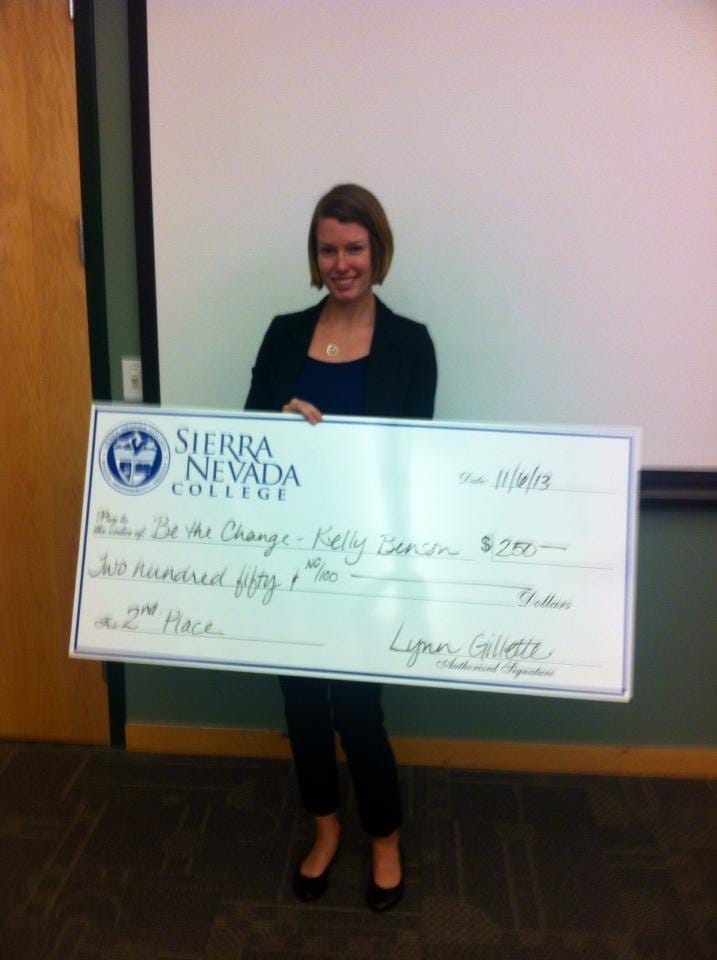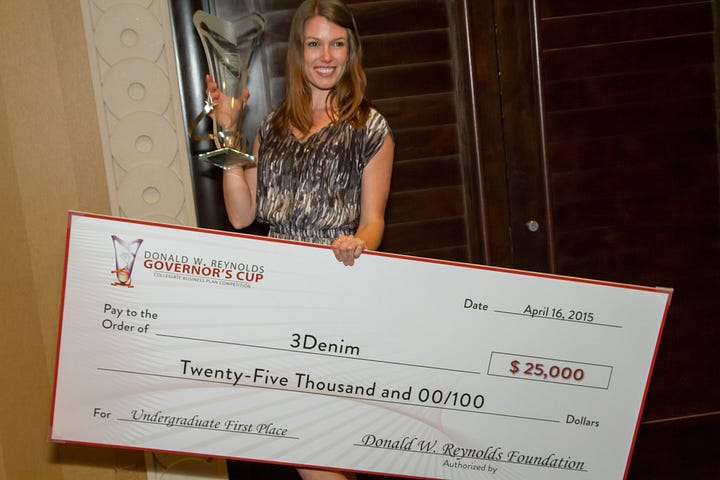Initiations of the Somatic 'No' and 'Yes'
Grounding creative ambitions in the wisdom of the emotional body
Wild on Purpose by Kelly Wilde Miller is a reader-supported publication. To receive new posts and support this growing ecosystem, consider becoming a free or paid subscriber.
Grounded Creation Through the Somatic ‘No’
I’ve always been an ambitious go-getter with lofty visions of what’s possible. It’s very easy for me to take the seed of an idea and grow it into a massive dream within minutes in my mind.
This quality was a large part of my success during collegiate business plan competitions, where pitching ideas was more valuable than actually creating something tangible (and still led to big checks).


What I have not been very good at, though, is setting realistic and attainable goals. Being a big-picture thinker has its positive qualities but it gets me into trouble when I then have to start taking steps toward it.
Last year, I set myself up for a big goal with very real financial implications.
You may remember my announcement for a Women’s Re-Wilding Leadership Retreat in Joshua Tree this April. I thought that if I set a goal that had very little wiggle room for failure, I would be ‘forced to succeed’ and would rise to the challenge.
So, I planned a retreat with over $30,000 in overhead. It would be my first retreat.
Granted, the vision was gorgeous. The venue was epic. And the curriculum was surely going to be transformative for whoever attended. But envisioning an amazing experience wasn’t the hard part for me.
Shortly after New Year’s, I went on a solo trip after my initial launch phase. There were no sales and a handful of maybe’s at this point. It was 4 am on the second day of my trip when I woke up in a state of overwhelming panic and stress.
The way I described it in this tweet thread (that’s now been seen by 71.2k people) is that my body caught up with the reality of the spreadsheet.
My somatic warning system — aka my nervous system — alerted me toward a problem. Without a miracle, there was very little chance that I could make my required numbers in time. I was staring at a future of being personally liable for tens of thousands of dollars.
Simply put, I had blown past my window of tolerance for complexity and risk.
The Window of Tolerance—the optimal zone—is characterized by a sense of groundedness, flexibility, openness, curiosity, presence, an ability to be emotionally regulated, and a capacity to tolerate life’s stressors.
If this window is eclipsed—if you experience internal or external stressors that cause you to move beyond and outside of it—you may find yourself existing in either a hyper-aroused or hypo-aroused state.
Hyperarousal is an emotional state characterized by high energy, anger, panic, irritability, anxiety, hypervigilance, overwhelm, chaos, fight-or-flight instincts, and startle response (to name just a few characteristics). Source.
I had crafted a plan that was so far beyond my capacity to ‘hold it in an emotionally regulated state,’ that I put myself into trauma-inducing risk.
When I think back to the original seed of intention for the retreat, I know what I was looking for was ‘growth-promoting risk.’ An opportunity slightly beyond my comfort zone that would stretch me without taking me out completely.
I learned that to do this, I must be more honest with myself. I must check in to see where the edges of my ‘window of tolerance’ truly are and respect them.
As my husband Jonny (a Nervous System Educator) recently shared in his guest post on Boundless by Paul Millerd, "living right at this exposed edge of life, honoring precisely where we are at, and designing our work and lives based on this felt sense of our nervous system’s capacity in each moment, becomes a lifelong practice."
In my case, a practice that required a big example of what not to do.
All to say, I listened to my 4am panic and honored the wisdom of my body. I did not try to override it, muscle through it, or argue that it was just an upper-limit problem that I could self-love my way through. I did not double down on my vision board and affirmations, I simply closed up the shop.
When I canceled the retreat, I felt a wave of relief move through my body.
I cried a few tears from the repressed emotion and unacknowledged fear, and took a giant breath. Within moments of the decision, I could feel the somatic shift happening in my body. I came back into groundedness, curiosity, and flexibility. I came back to optionality and possibility.
It was my proudest moment of being a creative entrepreneur so far.
Why? Because I learned first-hand that my body holds all the information I’ll ever need to create anything.
Moving forward, I know that as long as I gradually increase my window of tolerance by taking incremental steps — not giant leaps into the unknown — that I can create anything.
Whether it’s a high-ticket luxury retreat or writing a book, every big-vision dream can be broken into smaller steps that can be lovingly held inside the profoundly wise boundaries of my body.
Generational Healing Through the Somatic ‘Yes’
One thing I did say “yes” to this Winter was bringing home a new member of the family. My husband and I did the thing that married people who settle down do…we got a puppy. Lola, an English Golden Retriever came into our life on January 9 at a mere eight weeks old.


I’m more nervous to share this story than the one above because it feels scandalous. If I’m completely honest with myself, it took me a few weeks to become a full somatic ‘yes’ to having Lola.
I come from a family lineage of women who sacrificed their freedom to take care of others. My mother, another big-picture visionary dreamer, used to say that it was because of children that she wasn’t able to make her dreams come true.
As an empathic child, I internalized this narrative.
Committing to a puppy is my current equivalent of committing to a child. And before I could fully land in the somatic ‘yes’ and excitement for this new journey, I had to process multiple generations of un-felt emotions.
Ancestral and generational trauma healing isn’t entirely new to me, but as I get older and more ‘committed’ in different areas of life, more of this wounding rises to the surface through my nervous system.
In a rage release session with my husband, I could hear my mother’s voice clearly in my mind speaking those words above. I felt the pain, grief, and anger from generations of women who were unable to live authentically and freely because of the societal norms of their times. Forced to repress their creativity and vibrancy to tend to the home and its inhabitants.
“Remaining silent about family pain is rarely an effective strategy for healing it. The suffering will surface again at a later time, often expressing in the fears or symptoms of a later generation.” - Mark Wolynn
I felt the conflicting feelings of love for the child (puppy) and the grief of the unlived life, the stolen time, and the martyrdom.
I said to Jonny, “I know that this isn’t all mine. It’s old and ancestral. But it is all here right now. So it is my responsibility” as he supported this rage release.*
It wasn’t that I didn’t want Lola, it was that I needed to clear old pains from my body to create space for her. To create space for a new narrative moving forward. After allowing these big emotions to move through me — a term called ‘emotional fluidity’ — a new possibility emerged.
A life where I could commit to being a loving puppy mom and maintain my sovereignty, agency, and creative capacity.
We’ve had Lola now for two months and I can confidently say that my somatic ‘yes’ has gradually come into full expression. There were a few practical co-parenting responsibilities we had to iron out in order for me to not feel like the ‘default parent’ or the one who ‘had to track everything’ and could never relax.
But mostly it’s been a journey of healing the internal narrative past down from previous generations and charting a new path forward for myself.
To learn more about healing generational trauma:
📖 Read // It Didn’t Start With You: How Inherited Family Trauma Shapes Who We Are and How to End the Cycle by Mark Wolynn
📖 Read // Discovering the Inner Mother: A Guide to Healing the Mother Wound and Claiming Your Personal Power by Bethany Webster
PS ~ A rage release session is a safe and intentional container where you get to express all of the anger coming through you. It’s best to do this with someone you feel very safe with and in a place where you can make noise. Tell your roommates what you’re doing in advance so they don’t get worried. Use pillows, your fists, and your voice to express without a filter. Keep going until you feel a natural drop into a softer experience, most likely grief and sadness. Stay with yourself until the whole emotional journey has completed itself.
Learn more about healthy anger release from my friend Edmond on Intimate Reflections on the Human Experience in his piece "Anger Is Meant to Be Felt and Moved, Not Managed and Controlled."






Hi Kelly, thanks for sharing this post. It resonated strongly with me as I've experienced something similar in the past. I felt ashamed for not following through with a commitment that I had made, but after reading your post I feel less ashamed and more human. Thank you!